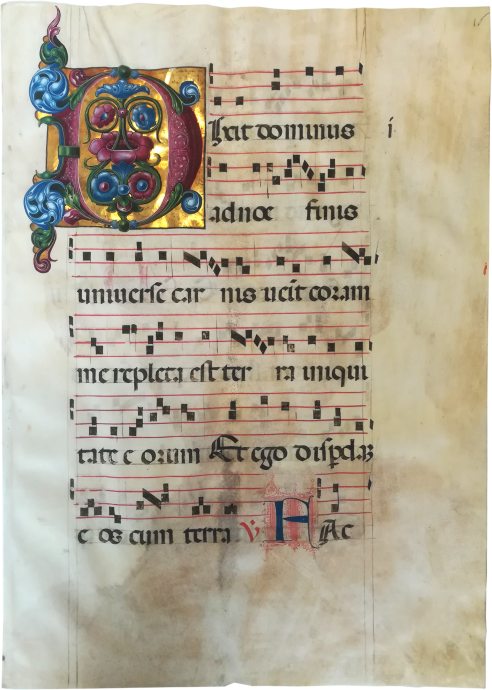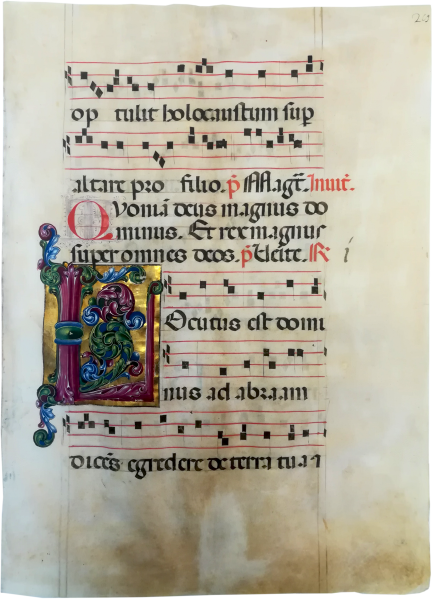Northern Italian Illuminator Leaf from an Antiphonal



Northern Italian Illuminator
, c. 1470sNorthern Italian Illuminator
Description
This leaf bears a grand illuminated initial 'D' with burnished gold and vivid colors. The initial opens the chant Dixit dominus ad Noe ("The Lord spoke to Noah"), the first response for a Sunday office. The initial 'D' is painted in magenta with fine white vine work in swirls and foliates and is filled with large flowers set at various angles on looping green stems. Tightly-wound swirls of foliates painted in boldly contrasting colors and highlighted with distinctive white hatches loop around the initial and spray into the margin.
The leaf comes from an Antiphonal that contained music for the Temporale (or Proper of Time), the portion of the liturgical year leading up to Easter. The bold style of the decoration best compares to initials in Choir Books illuminated by Ferrarese artists in the circle of Martino da Modena in the 1470s. These initials are characterized by tightly-wound and copiously highlighted swirls of foliates in blue, green, and magenta. The style of the decoration can also be compared to initials and borders in the Choir Books of Cardinal Bessarion, painted by illuminators working in Ferrara in the decades around 1460, including Franco dei Russi and Guglielmo Giraldi, who also worked on Bibles and Missals made for Borso d'Este and Ercole I d'Este (Palladino, pp. 78-96).
The leaf ruled in ink with six registers of square notation on four-line staves in red (rastrum 32 mm.) recto and verso, rubrics in red, and initials in blue and red with purple and red penwork decorations, written in brown ink in a Gothic rotunda, with the chants Dixit dominus ad noe (recto), Fac tibi archam de lignis (recto/verso), and Noe vir iustus atque (verso), the later ending imperfectly with "...omnis quecumque," with Roman numerals "i" and "ii" in the right margin (numbering the responses), and with a later foliation in the top corner of the recto, "16." The miniature with a single isolated loss of pigment to the lower quadrant, with a single loss of gold leaf at the top edge, otherwise in remarkable good condition, the leaf with some minor cockling and creasing.
Literature:
For comparisons see:
Palladino, P. Treasures of a Lost Art: Italian Manuscript Painting of the Middle Ages and Renaissance, New York, 2003, pp. 78-96 [exhibition catalogue].
Alexander, J. J. G. The Painted Book in Renaissance Italy, 1450-1600, New Haven and London, 2016, pp. 83-90, esp. p. 87.
